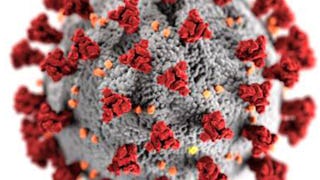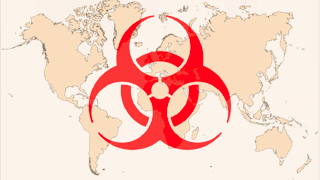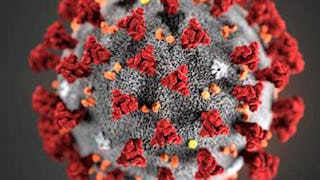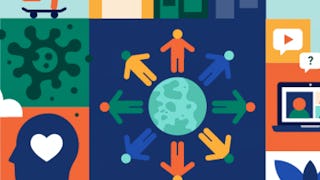This course covers the science and social impacts of viral infectious diseases. We will begin by covering the basics: what a virus is, the structural and functional diversity of viruses, and how viruses use our bodies and the bodies of other organisms to replicate. Then we will dive into the human response: how our immune systems work to protect us from pathogenic viruses and how we use science and social systems to fend off viruses through vaccines and public health measures. We will look closely at the COVID-19 pandemic, examining the emergence of the SARS-CoV-2 virus, the development of the vaccines, and how social and economic disparities influenced risk during the pandemic. Throughout the course, we will hear from experts in the fields of molecular biology, epidemiology, environmental biology, medicine, and public health to learn how technology and engineering solutions are helping scientists understand, track, and model viruses and disease outbreaks.

Enjoy unlimited growth with a year of Coursera Plus for $199 (regularly $399). Save now.

Virology and Epidemiology in the Time of COVID-19

Instructor: Rob DeSalle, Ph.D.
3,313 already enrolled
(48 reviews)
Skills you'll gain
Details to know
6 assignments
See how employees at top companies are mastering in-demand skills

There are 6 modules in this course
Course author Dr. Rob DeSalle starts by posing a few seminal questions: What is a virus? Are viruses alive? What even is life? While there are no simple answers and much is still unknown, scientists have developed frameworks to understand how viruses fit into the complexity of life on Earth. In the first essay of the course, we cover virus basics: the difference between viruses and microorganisms such as bacteria; viral geometry and structural diversity; and viral life cycles and replication. Next, virologist Dr. Koenraad Van Doorslaer explains how viruses are classified and why this classification is important. When COVID-19 became a pandemic, understanding how viruses are related to one another enabled scientists to quickly identify SARS CoV-2 and its variants. This week’s video explores the connections among humans, viruses, other organisms, and the ecosystems we all inhabit.
What's included
3 videos4 readings1 assignment
The key to understanding what a virus is lies in understanding how it replicates itself within its host. Dr. DeSalle explains the three categories of viruses—DNA viruses, RNA viruses, and reverse-transcribing viruses—and their replication cycles. While they employ different strategies, they all produce mRNA, which is translated into proteins that all viruses need to function. Next, Dr. Michael Tessler explains how scientists use genomics and bioinformatics to identify viruses that become pathogenic. Finally, we take a closer look at two viral diseases: HIV and HPV. In one case (HIV), scientists have been working toward a vaccine for more than 40 years and a vaccine is beyond their grasp. In the other case (HPV), a vaccine has successfully prevented cancers for over a decade. In the first of the four-part video series about the making of a COVID-19 vaccine, we set the stage by asking: How do you prepare for a pandemic of a virus that doesn’t yet exist?
What's included
4 videos3 readings1 assignment
As we have learned, viruses that cause disease are formidable foes, but our bodies have ways of fighting back. We have an innate immune system that works to stop all invading microbes, and an adaptive immune system that learns how to fight particular ones. We explain some of the mechanisms of this very complex system and the medicines that we use to aid our natural defenses. Dr. Tessler breaks down the different methods that scientists use to identify viruses that have broken through our defenses and made us sick. In the week’s final essay, we meet Dr. Julie Ledgerwood, who oversaw the clinical trials that led to a revolutionary mRNA vaccine for COVID-19. Two videos cover vaccines: how they work and how they were developed and tested.
What's included
3 videos3 readings1 assignment
While diseases have shaped the course of humanity for millennia, we are witnessing the emergence of novel pathogens and pandemics at an unprecedented rate. COVID-19 is at least the seventh pandemic to affect humans in the past century. Why is this? How do pathogens that start off in nonhuman animal species spread to humans? This week we are introduced to Dr. Pallavi Kache and Dr. Neil Vora and the field of disease ecology, which seeks to understand the interactions between pathogens and their hosts in the context of their evolution and environment. They explain how pathogens emerge from nonhuman hosts into human populations and how our increasingly urban environments affect the spread of disease. Then, Dr. Jeffrey Shaman explains how, once a pathogen has infected humans, it then spreads from human to human, and how we measure the dynamics of disease spread. A series of videos explores pandemics from history to the present, and we discuss how we know that the COVID-19 vaccines are safe and effective.
What's included
3 videos2 readings1 assignment
Computer modeling has been an important tool during the COVID-19 pandemic. Dr. DeSalle explains the process by which epidemiologists use models to monitor the spread of the pandemic, to evaluate efforts to control it, and to guide policymakers as they make decisions about measures like vaccination, closing schools, and allocating healthcare resources. In this week’s case study of Dr. Jude Kong, we learn how modeling helped one community make informed decisions about public health policy during the COVID-19 pandemic and saved lives. Finally, we look at how diseases and pandemics affect different communities differently, and how public health experts are working to address health inequities. In the final part of the video series about the making of a COVID-19 vaccine, we ask how we can use our new knowledge about mRNA technology and health inequities to ensure better outcomes for the future.
What's included
2 videos3 readings1 assignment
We start this week by zooming in on New York City, which was one of the epicenters of the COVID-19 pandemic in early 2020. Officials at the New York City Department of Heath describe what it was like to manage the pandemic on the ground and explain lessons they learned. Then we zoom out to look at the past, present, and future of emerging infectious diseases. Humans have lived with infectious diseases for millenia, but why are there an increasing number of spillover events, in which viruses jump from nonhuman animals to us? What do we know now that could protect us from future outbreaks? In the final essay of the course, Dr. DeSalle answers the question: How can we prepare for future pandemics locally and as a global community, through testing, vaccines, surveillance, and treatment?
What's included
2 videos4 readings1 assignment
Instructor

Offered by
Explore more from Basic Science
 Status: Preview
Status: PreviewUniversity of Florida
 Status: Preview
Status: PreviewThe Pennsylvania State University
 Status: Free
Status: FreeImperial College London
 Status: Free
Status: FreeUniversity of Colorado Boulder
Why people choose Coursera for their career




Learner reviews
48 reviews
- 5 stars
83.33%
- 4 stars
14.58%
- 3 stars
2.08%
- 2 stars
0%
- 1 star
0%
Showing 3 of 48
Reviewed on Jun 5, 2024
I am very thankful for your fruitful knowledge that you give me in this virology course.
Reviewed on Sep 2, 2022
Would have prefered more video-based lectures as it increases interest and concentration about the topic. Moreover, it makes us feel as if we are directly involved with the professor.
Frequently asked questions
To access the course materials, assignments and to earn a Certificate, you will need to purchase the Certificate experience when you enroll in a course. You can try a Free Trial instead, or apply for Financial Aid. The course may offer 'Full Course, No Certificate' instead. This option lets you see all course materials, submit required assessments, and get a final grade. This also means that you will not be able to purchase a Certificate experience.
More questions
Financial aid available,





